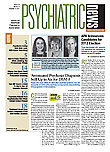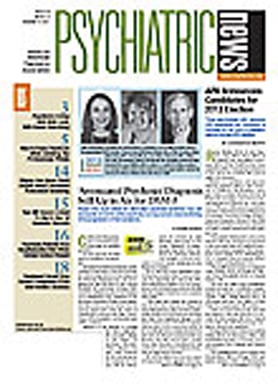Every family deals with its share of stress, but in the worst cases, poverty and stress are recognized risk factors for abuse, and the victims of that abuse are often the youngest members of a family.
Abusive head trauma (AHT) is the leading cause of death from child abuse, and the vast majority of victims are under age 5. In the October Pediatrics, researchers based at Children's Hospital of Pittsburgh reported the results of their efforts to determine whether the economic recession was playing a part in what they perceived to be an increase in AHT cases.
"In 2008, we had more children die from AHT than from any nonaccidental injury; that was unprecedented," Rachel Berger, M.D., M.P.H., an associate professor of pediatrics at the University of Pittsburgh School of Medicine and lead author of the paper, told Psychiatric News "We had 11 deaths in one year and 37 cases, despite national statistics that told us the number of child abuse cases was consistently dropping."
Berger collaborated with colleagues from Pittsburgh, Washington state, Cincinnati, and Columbus, Ohio, to collect clinical data for AHT cases diagnosed in children younger than age 5 from January 1, 2004, until June 30, 2009, by hospital-based child-protection teams in three regions (Seattle, western Pennsylvania, and Ohio/northern Kentucky).
Their results showed that the rate of AHT increased significantly during 19 months of economic recession, compared with the 47 months before the recession. The dates of the recession—December 1, 2007, through June 30, 2009—were defined by the National Bureau of Economic Research. They also examined unemployment rates during the study period, but found no relationship between unemployment rates and AHT rates.
During the study period, 422 children were diagnosed with AHT in a 74-county region. The mean age of the subjects was 8.9 months (range: 0.3 to 58 months); 76 percent of them were younger than 1 year old. The overall mortality rate was 16 percent.
The overall AHT rate increased from 8.9 per 100,000 before the recession to 14.7 per 100,000 during the recession. The researchers reported no differences in mean age, mortality rate, insurance status, proportion of children without siblings, or proportion of children with evidence of previous abuse during the recession compared with the prerecession period.
Data were collected through medical-record review and included year and month of hospitalization, age, gender, mortality, insurance, county of residence, and whether subjects were admitted to a pediatric intensive care unit, had evidence of possible previous physical abuse, or had siblings. Subjects were considered to have evidence of possible previous abuse if they had healing fractures, chronic subdural hemorrhage, and/or nonacute bruises.
Do these results indicate AHT is a form of child abuse specific to severe economic stressors? "No, we think we've seen an increase in all types of abuse," said Berger. "We chose to look at AHT for this study because every child with an AHT comes to a pediatric hospital, so we knew we could capture the cases." The researchers also chose their catchment areas specifically because each one had only one regional pediatric level 1 trauma center, in order to maximize the possibility that all children in the region would be evaluated at the participating hospital.
"This finding is consistent with our understanding of the effect of stress on violence," noted Berger and her colleagues. "Given the high morbidity and mortality rates for children with AHT, these results are concerning and suggest that prevention efforts might need to be increased significantly during times of economic hardship. From a clinical perspective, this association might warrant changes in the threshold for physicians to evaluate for AHT during times of economic stress in the same way that physicians change the threshold to test for and treat pertussis during a pertussis outbreak."
An abstract of "Abusive Head Trauma During a Time of Increased Unemployment: A Multicenter Analysis" is posted at <www.ncbi.nlm.nih.gov/pubmed/21930535 >.


